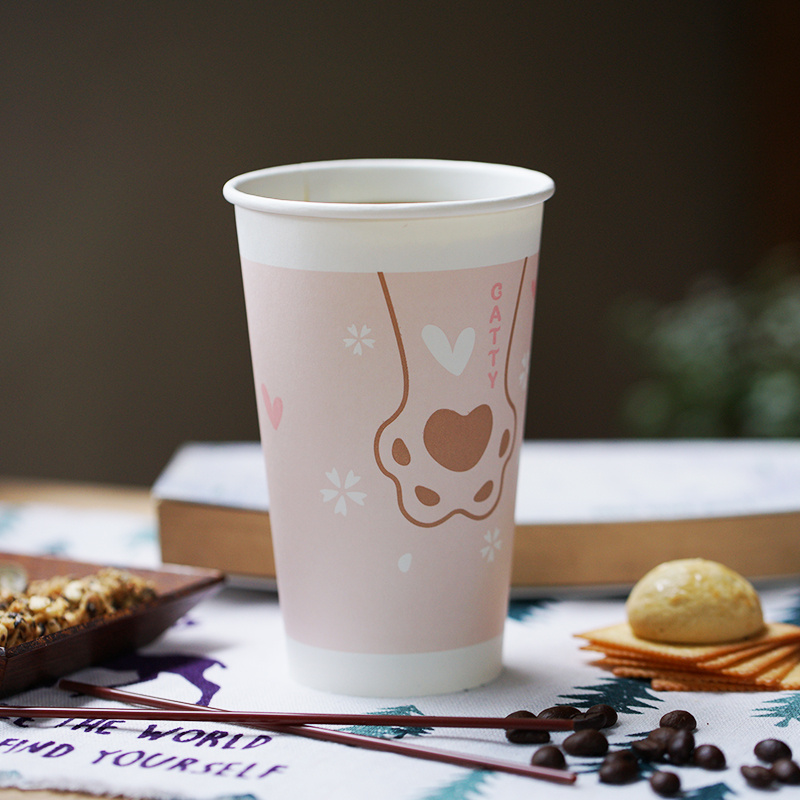
Paper cups have become a ubiquitous part of daily life, serving as a convenient, disposable solution for serving hot and cold beverages across homes, offices, cafes, and events. Beyond their practicality, modern paper cups are evolving to address environmental concerns, with sustainable materials and designs that reduce their ecological footprint. This guide explores their composition, types, environmental impact, and diverse applications, highlighting why they remain a preferred choice for both consumers and businesses.
The core composition of paper cups balances functionality and safety. Most paper cups are made from food-grade paperboard, a thick, durable material derived from wood pulp or recycled paper. To prevent leakage, the inner surface is coated with a thin layer of polyethylene (PE) or, increasingly, plant-based alternatives like polylactic acid (PLA)—a biodegradable polymer made from cornstarch. This coating creates a barrier against liquids, ensuring the cup retains its shape even when filled with hot coffee, tea, or cold drinks like soda or smoothies. High-quality paper cups also feature reinforced rims for comfortable sipping and structural integrity, preventing collapse or spills during use.
One of the key trends shaping paper cup design is sustainability. As environmental awareness grows, manufacturers are moving away from single-use plastics and prioritizing eco-friendly materials. Recycled paper cups are made from post-consumer waste, reducing the demand for virgin wood pulp and minimizing landfill waste. Compostable paper cups, lined with PLA instead of PE, break down naturally in industrial composting facilities, leaving no harmful residues. Additionally, some brands offer reusable paper cups (treated for durability) or cups made from alternative fibers like bamboo or sugarcane bagasse, further lowering their environmental impact. These sustainable options appeal to consumers seeking to reduce their carbon footprint without sacrificing convenience.
Paper cups come in a variety of types tailored to specific needs. Hot beverage cups are thicker and often insulated to keep drinks warm while protecting hands from heat—some feature double-wall construction for enhanced insulation. Cold beverage cups are lighter but still leak-proof, with larger sizes available for smoothies, iced coffee, or fountain drinks. Specialty cups include disposable soup cups (with wider rims and stronger structures), dessert cups (for ice cream or yogurt), and custom-printed cups for events, parties, or branding (without promotional language). portion-sized cups are ideal for tastings, condiments, or children’s drinks, offering convenience and reducing waste.

The versatility of paper cups makes them indispensable in numerous settings. In food service, cafes, restaurants, and fast-food chains rely on paper cups for takeout and delivery, as they are lightweight, stackable, and easy to transport. Offices and workplaces use them for breakrooms, providing employees with a convenient way to enjoy beverages without the need for washing dishes. At events—concerts, festivals, conferences, and weddings—paper cups are a practical choice for serving large crowds, minimizing cleanup and ensuring hygiene. They are also popular in homes for casual use, picnics, or gatherings, where disposable tableware simplifies hosting.
Hygiene is another key advantage of paper cups. Unlike reusable mugs or glasses, paper cups are single-use (or designed for limited reuse), reducing the risk of cross-contamination between users. This makes them ideal for public spaces, healthcare facilities, and schools, where maintaining cleanliness is a top priority. Disposable paper cups also eliminate the need for washing, saving time, water, and energy—especially in high-traffic environments.
When selecting paper cups, consumers and businesses consider several factors. Capacity ranges from 4oz (shot cups) to 32oz (large tumblers), with standard sizes (8oz, 12oz, 16oz) suitable for most beverages. Coating type matters: PE-lined cups are affordable and widely recyclable, while PLA-lined cups are better for composting. Strength and leak resistance are crucial—high-quality cups should not collapse or leak, even when filled with hot liquids or carried in bags. For eco-conscious buyers, certifications like FSC (Forest Stewardship Council) or compostable labels ensure the cup meets sustainable standards.
In conclusion, paper cups are a versatile, convenient solution for serving beverages in diverse settings, with sustainability now a central focus of their design. From everyday use at home to large-scale events, their lightweight, hygienic, and disposable nature makes them a practical choice. With options ranging from recycled and compostable cups to insulated and specialty designs, there is a paper cup to suit every need. As the industry continues to innovate with eco-friendly materials and processes, paper cups remain a relevant and responsible choice for consumers and businesses seeking convenience without compromising environmental values.


